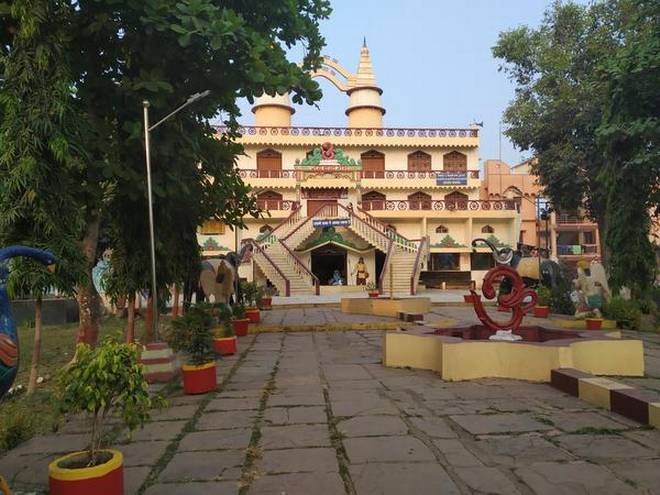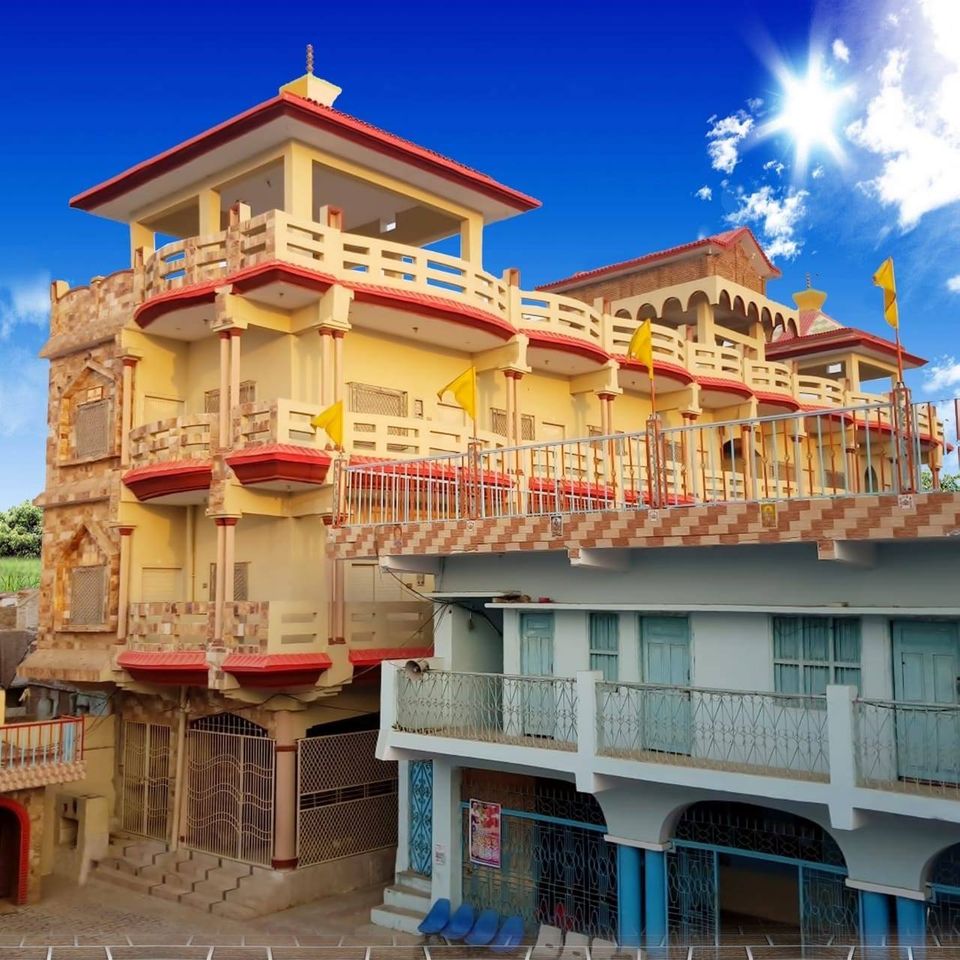
Sindhis control many trades in Chhattisgarh – from mobile phones, automobiles and clothes to grocery stores, and now have great influence in politics also.
Milind Teckchandani
I have recently been watching a number of videos of Sant Yudhishtar Lal (Shadani durbar) on Facebook during his annual visit to Sindh. Shadani durbar is one of the oldest durbars in Sindh originally located in the Upper Sindh area of Mirpur Mathelo taluka in Ghotki district. It is a 300 year told temple established by Sant Shadaram Sahib in 1768. The family subsequently relocated to India in 1968 to Raipur (currently the capital of the Indian state of Chhattisgarh) and have now a durbar both in Sindh as well as in Raipur. Sant Yudhishtar Sahib is the current “gaddisheel” at the Durbar.
I first heard about Saeen sahib when I began reading about our heritage and culture a few years back. However, I only realized durbar’s popularity when during 2018 state elections, the then Bhartiya Janta Party President, Mr. Amit Shah, paid a visit to Sant Sahib in Raipur. The attached link to a 2018 article published in “The Hindu” newspaper details about the increasing relevance of Sindhis in political sphere in Chhattisgarh. Subsequently, I learned more about the durbar during my interactions with Dr. Sunila Sewani whose family too hails from Mirpur Mathelo and are close followers of Durbar.
______________
Excerpts from a report published in The Hindu, dated November 15, 2018
Influence increasing
Mr. Shrichand Sundrani, a BJP candidate from Raipur North, did not deny that the political influence of Sindhis in Chhattisgarh, “is increasing alongside Marwaris or Jains,” as other parties are also putting up Sindhi candidates. Members of the Sindhi community said that they did not mind who won in Raipur North as long as only Sindhi candidates are nominated by all parties. “We wanted to ensure that Raipur North turns into a dedicated Sindhi seat. It nearly happened this time but the Congress withdrew its Sindhi candidate,” said a community member close to the BJP.
The Congress had dominated the central Indian province through Brahmins and 36 royal families for half a century. With the rise of the Jana Sangh, the Marwaris and Jains of Raipur, who were less organized in politics, gathered under the saffron flag. The BJP and the Vaishya community’s rise in Chhattisgarh was thus almost synchronized to the formation of Chhattisgarh in 2000.
Late entrants
Sindhis are late entrants. “There was no way we could be early entrants in Chhattisgarh’s politics,” said Kanhaiya Lal Chuggani, Chhattisgarh chapter president of the Bhartiya Sindhu Sabha (BSS), a wing of the Rashtriya Swayamsevak Sangh (RSS), the patriarch of the Sindhi community in Chhattisgarh.
“We came as paupers and thus, it was a question of survival for a Sindhi. How can he give time to politics?” asks Mr. Chuggani.
“But Sindhis made money mainly through trading and their political aspirations increased. So, a few years ago, the Chhattisgarh Chamber of Commerce had its first Sindhi president. Now, the Sindhis, who are 1% of the population, are joining politics,” said Mr. Chuggani.
The community was largely aligned with the BJP. “In 1940, RSS men, like the all-India president of BSS, Lakhsman Chandiramani (93), used to visit Sindh to campaign. The association [with RSS] continued and grew when L.K. Advani became the Deputy Prime Minister, and we naturally gravitated towards the BJP,” said Mr. Chuggani.
Sindhis now control many trades in Chhattisgarh — from mobile phones, automobiles and clothes to kirana (grocery) stores, which were with other communities earlier. “We always work on a lower margin of profit compared with Agarwals or Jains. It is often said that wherever we go, we destroy the market,” laughed Mr. Chuggani, who feels that Sindhis can now financially influence both political parties and the public.
From within
Competition came from within the community in the 2018 election. There were nearly half a dozen contenders for the Raipur North constituency and Mr. Sundrani’s name was declared at the very end. Amar Parwani, a dynamic Sindhi businessman, and former head of Chhattisgarh Chamber of Commerce, nearly bagged the BJP ticket.
“But Mr. Sundrani got it. The head of the Shadani Darbar, the most influential Sindhi pilgrimage, recommended Sundrani to the Chief Minister,” said a senior community member.
Moreover, “Parwani is a very new entrant in the BJP,” said a BJP official. But many in the Sindhi Samaj consider Mr. Sundrani, who won with a margin of a little over 3,000 votes in 2013, a weak candidate.
There are about 1 lakh Sindhis with 10%-15% votes in each of the four Raipur seats. But will they finally vote for a Sindhi? Mr. Sundrani thinks that “they definitely will.” But many Sindhis are in two minds. Whoever loses, Hindu Sindhis have won in Chhattisgarh, 70 years after losing their homeland in southern Pakistan.
______________

Every year, Saeen sahib along with 45-50 pilgrims travel to Sindh for a week long pilgrimage which includes visit to all major temples. I had never realized the popularity of Saeen sahib and the durbar in Sindh before I saw the live videos being relayed on his Facebook page. Sahib’s visit to Sindh seems to act as a unifying force for the rapidly declining Hindu Sindhi community. I had the pleasure of watching young kids dressed as Hindu gods and goddesses like Radha Krishna and Ram Seeta and performing to various Bhajan’s in front of Saeen Sahib. It takes me back to my childhood when the 22 block kids used to arrange for a “jhanki” on Janmashtmi every year. It used to begin with finding a volunteer family who would allow us to use their alley (“thada” as we call it here) to set up the jhanki. This used to be followed by the boys bringing bricks and sand/geeli mitti from the nearby construction sites and the girls arranging for various idols that will be kept in the Jhanki. We then used to arrange for a small “jhoola” where Krishna Bhagwan would be kept. Everyone from the block used to come down in the evening to watch our Jhanki. Such lovely memories!
I end with the below youtube video from Saeenjan’s visit to Sindh which highlights his and Darbaar’s popularity. Our Saeenjun’s play an important role in holding the community together and to keep reminding us about our rich heritage and culture. I pray to Lal Saeen to bless sahib with a long and healthy life.
Watch rituals at Shadani Durbar Mirpur Mathelo in Sindh
________________
Courtesy: Sindhi Chokro Blogs (Published on December 20, 2020)